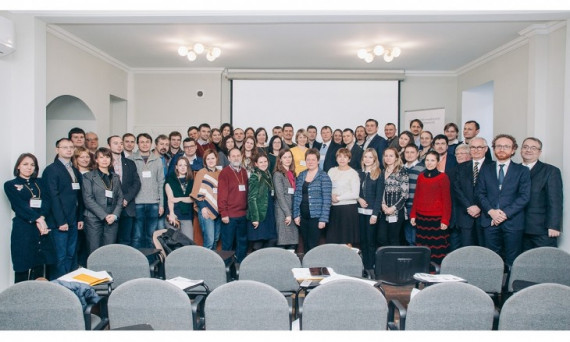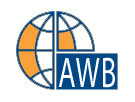The St. Petersburg Spring Workshop on Risk Management, Insurance, and Finance 2018 took place on March 1–3, 2018 at the European University at St. Petersburg. Rocco Roberto Cerchiara (Università della Calabria, Italy), Lauri Saraste (LocalTapiola Life, Finland) and Alexey Botvinnik (Conning Germany GmbH, Köln) introduced the audience to such topics as «Risk measurement and modelling under Solvency II», «Life Insurance» and «Economic Scenario Generators and Applications».
The Programme
 |
March 1st, 2018
Solvency II: A very good framework but treatment of long-term business needs improvements a keynote talk by Dr. Igor Yurgens, President of the All-Russian Insurance Association |
Short CV
Mr. Yurgens is the Chairman of the Management Board of the Institute of Contemporary Development, member of the Management Board of the Russian Union of Industrialists and Entrepreneurs, a member of the Presidential Council for Civil Society Institutions and Human Rights, a member of the Board of Trustees of Russian Council on International Affairs, a member of the Presidium of the Council for Foreign and Defense Policy, a member of the Council of the International Institute for Strategic Studies (IISS), and a member of the Advisory Board of the Centre for European Reform (CER).
In June 2013, Igor Yurgens was elected President of the All-Russian Insurance Association. In January 2015 he was elected President of Russian Association of Motor Insurers. In November 2016 he became the President of National Union of Liability Insurers.
Born in Moscow in 1952, Igor Yurgens graduated with a degree in economics from Moscow State University in 1974, when he began working in various positions with the international departments of the Professional Unions Central Council of the USSR and the UNESCO Secretariat.
From 1992 to 1997, he was the First Deputy Chairman of the CIS Trade Union Confederation. He later served as Co-Chairman of the Foundation for the Development of Parliamentarism in Russia (1997–1998). In 1998 he became President of the All-Russian Insurance Association (1998–2002).
From 2002 to 2005, Mr. Yurgens served as Vice President/Executive Secretary of the Russian Union of Industrialists and Entrepreneurs (RSPP). From 2005 to the present, he has been Vice President of RSPP.
He is a professor at the National research university «Higher School of Economics», where he regularly holds seminars on the Particularities of Government-Business Relations in Russia. Under the editorship of Igor Yurgens, a Risk Management textbook was published in 2003. He has also penned numerous articles and monographs.
He is the recipient of several state and international awards, including the Order of Honor of the Russian Federation, L’Ordre National du Mérite of France and Order of Saint Charles of Monaco.
 |
March 1st, 2018
Risk measurement and modelling under Solvency II by Professor Rocco Roberto Cerchiara, Università della Calabria, Italy |
Short CV
Rocco Roberto Cerchiara is Assistant Professor of Actuarial Mathematics, Risk Theory, Italian Accounting Principles and IFRS. His main topics of research are: Risk Theory models for pricing and reserving risk, Individual Claim Reserving for Pricing and Reserving purposes, Extreme Value Theory, Solvency II and IFRS. He had published a large number of works and presented in many national and international congress on these topics. He is a member of Professional & Scientific Bodies: I.I.A. — Italian Institute of Actuaries; Fully Qualified Member of O.N.A. — Italian National Order of Actuaries; member of Italian Solvency II group of I.I.A. and AIAF. He speaks English and is fluent in Italian.
Rocco Cerchiara was also Senior Consultant with Willis Towers Watson in Rome until June 2017 and has more than 15 years' experience in the insurance industry, with a particular focus in non-life actuarial consulting. His experience covers the full range of actuarial services, including:
- Appointed Actuary for two P&C Italian Companies;
- Pricing Support for P&C Italian Companies;
- Reserve review for Statutory, Solvency II, IFRS and M&A purposes;
- Economic capital modelling and review;
- Actuarial Function support;
- Lead support for Italy on Best Practice in Non-Life Reserving (Astin 2016);
- Other Astin Working Party:
Neural Network and claim reserving;
The Exposure Draft of the Risk Adjustment Text Book for IFRS 17.
Summary of the Course
The calculation of the Aggregate loss distribution is one of the main issue for pricing, reserving and capital requirements purposes. Solvency II regulation provides different approaches for the calculation of the Solvency Capital Requirement (SCR): standard formula with simplification, standard formula, standard formula with undertaking specific parameters (USP), partial internal model and full internal model. A natural extension of an Internal Risk Model (IRM) is the Own Risk Solvency Assessment (ORSA) to analyze the solvency ratio in a long time horizon. The underwriting cycle provide an additional volatility to liabilities distribution and could increase the SCR. The aim of this course is to discuss to analyze possible approaches in risk modelling and capital requirement calculation.
Outline
1) The calculation of SCR: standard formula with simplification, standard formula, standard formula with USP, partial internal model and full internal model.
2) Undertaking Specific Parameters under Solvency II.
3) Partial and Internal Models:
a) Aggregate Loss Distributions, Extreme Value Theory and Risk Measures.
b) The calculation of the Aggregate Loss Distribution using Monte Carlo Simulation and Fast Fourier Transform.
4) Analysis of the underwriting cycle using a Piecewise Linear Dynamic System under the ORSA requirements.
Literature
1) Undertaking specific parameters under Solvency II: reduction of capital requirement or not?
2) Aggregate Loss Distributions and Risk Measures for Non-life Insurance.
4) A dynamic analysis of the underwriting cycle in non-life insurance.
 |
March 2nd, 2018
The development of Valuation Centers in Russia a keynote talk (in Russian language) by Konstantin Vasilyev, Deputy CEO of CBonds.ru Ltd |
Short CV
Konstantin Vasilyev has been with Cbonds.ru Ltd. since 2005. He currently holds a position of Deputy CEO and a Partner with the Company. His responsibilities include: providing leadership and developing strategy of his department; developing the business area of Cbonds.ru Ltd. associated with coverage of fixed income markets; presenting the company's services at conferences and meetings with potential partners and clients; setting goals for the IT department. From 2002 to 2005 he was employed at investment company AVK as a marketing analyst.
In 2003, he graduated from St. Petersburg State University (SPbU), Department of Economic Cybernetics, Faculty of Economics; majored as «Mathematical Economist». In 2007 he completed post-graduate studies at the Faculty of Economics, majoring in «Mathematical and Instrumental Methods of Economics». Konstantin holds a PhD in Economics; thesis: «Economic and Mathematical Modelling of Financial Bubbles in the Stock Market».
Outline
1) Russian bond market
- Dynamics and structure of the Russian bond market;
- Secondary market of the Russian bonds.
2) Valuation Centers
- Background of the Valuation Centers (VC);
- Structure of VC and requirement for them;
- Options of use of data of VC;
- Algorithm of assessment of VC Cbonds and structure of data;
- Algorithm of assessment of VC NSD and structure of data;
- Prospects of development of VC NSD;
- Cbonds Information services.
 |
March 2nd, 2018
Life Insurance by Lauri Saraste, LocalTapiola Life, Finland |
Short CV
Lauri Saraste is the Chief Actuary of LocalTapiola Life and has over 15 years of experience on the insurance sector; life, investments, pensions and re-insurance. As the chief actuary he’s responsible for the actuarial function, life company solvency and reporting, and of the re-insurance program. He’s also a member of group ALM committee and a group risk management committee. Lauri has also participated on the actuarial work, being in the board of the Actuarial Society of Finland for 6 years of which two years holding the presidency. For the past 9 years he has also been active on the insurance development in Europe, on both AAE (European actuaries) and AMICE (mutual insurers) having Solvency II in the main focus. Currently he also chair’s an European solvency working group and is a member in several insurance related committees.
Outline
1) Life insurance products. What are the normal products, how to deal with long maturity products, why guaranties are tricky, how to manage with customer behavior, what are the issue in Europe with Life products.
2) ALM in life insurance. What are the important steps with the Strategic asset allocation (SAA), how capital allocation and hedging needs to be taken into account, what are important drivers with ALM.
3) Solvency II framework in life insurance. Valuation, VaR-measures, relationship with the market, processes.
4) Managing the business. What do the different functions (actuary, risk management, investment, etc.) try to achieve, with what measures can life insurance be monitored, how all this can be used for better business decisions.
 |
March 3rd, 2018
Economic Scenario Generators and Applications by Alexey Botvinnik, Conning Germany GmbH, Köln |
Short CV
Alexey Botvinnik studied Mathematics in the Lomonosov Moscow State University and in the Georg-August-University Göttingen. He has 16 years of experience in a German life insurance company and in an actuarial consulting firm, which has included different aspects of software engineering and stochastic modelling — in particular: ALM, an estimation of Embedded Value, Strategic Assets Allocation, Replicating Portfolios, and Economic Scenario Generators. He is a member of DAV (German Society of Actuaries).
Summary of the Course
This course gives an introduction to economic scenario generators and their applications in financial modeling and risk management.
An economic scenario generator (ESG) projects all the financial economic and macro-economic variables necessary for risk management, providing the future distributions of the risk elements driving financial variability. This allows for testing a business model in a stochastic environment, observing a broad variety of economic conditions.
The first part of the course is focused on basics of ESG construction and validation, providing main ideas regarding economic model building and testing of ESG results both in «real-world» and «risk-neutral» contexts. An introduction to both these concepts will be given.
The second part of the course focuses on some of ESG applications in company models, regulatory reporting aspects, risk management and strategic asset allocation. This part concludes with a case study.
A sound basic understanding of probability theory and — ideally — stochastic processes will help the participants to better follow the course but is not a requirement.
Outline
Part 1. ESG section.
- Tools needed to build an ESG;
- How to construct a good model (using equity modeling as an example);
- Introduction to interest rate models;
- Real world modeling and validation;
- Risk neutral modeling and validation;
- Q&A.
Part 2. Applications section.
- Modeling investments using ESG output;
- Building an integrated company model;
- Risk management using stochastic projections;
- Strategic Asset Allocation (SAA): Case Study;
- Q&A.
|
The Organising Committee
|
Contact Ms Lina Terekhina Department of Economics E-mail: lterekhina@eu.spb.ru Phone/fax: +7 (812) 386-7632 |
Partners and Supporters
The Workshop greatly benefits from the support from
Photo Report of the Workshop 2018
{gallery}ec_dep/SchoolsInRMIF/Photos_2018/Day_1{/gallery} {gallery}ec_dep/SchoolsInRMIF/Photos_2018/Day_2{/gallery} {gallery}ec_dep/SchoolsInRMIF/Photos_2018/Day_3{/gallery}

